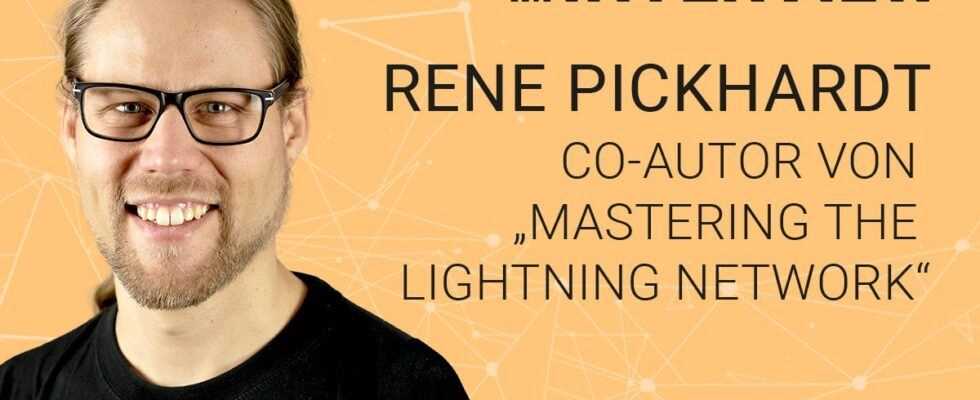With Mastering the Lightning Network, a book comes on the market that has what it takes to become a standard work on the Bitcoin scene. We spoke to co-author Rene Pickhardt about the risks and opportunities in the Lightning network, the creative process and open source development.
When we meet Rene Pickhardt for an interview, the Lightning specialist is in a good mood. No wonder: With the publication of Mastering the Lightning Network: A Second Layer Blockchain Protocol for Instant Bitcoin Payments the most ambitious project of the educator comes to an end. Pickhardt and his two co-authors, Andreas Antonopoulos and Olaoluwa Osuntokun, also known as @roasbeef, sat at the book. The result can be read; it is probably exactly what it takes now to convince more programmers of the open source project Lightning. Speaking of open-source: The entire text is freely available on GitHub.
But: what is this Lightning network anyway, Mr. Pickhardt?
“The Lightning Network is a nifty way of using Bitcoin. With the Lightning network we are making it possible to send bitcoins back and forth between people without having to accept the disadvantages of the slow blockchain ”, is the most precise answer to this question that we have ever heard. “I’ve had to answer them several times,” says the author with a laugh.
But that’s exactly what Lightning is about: A clever way to send Bitcoin (the currency) without using Bitcoin (the network):
What Bitcoin can do is process transactions – only 7 of them per second on average. […] It now turns out that you can do that with the Lightning network at a significantly higher rate than with these seven technical transactions. With Lightning you have more or less the same security guarantees,
Pickhardt told BTC-ECHO.
Problem area liquidity
But as groundbreaking as the second-layer network on Bitcoin, which was first mentioned in 2015 in a corresponding paper by Joseph Poon and Thaddeus Dryja, it doesn’t work without technical difficulties. First of all, there is the problem of liquidity. Sufficient liquidity is required to forward payments within the network, which always consists of payment channels between two parties. A distinction is made between inbound and outbound liquidity – “receiving and sending liquidity”.
If we want to pay someone via Lightning, then there must always be enough liquidity in the channels. But you just don’t know that.
Rene Pickhardt
But this is exactly where a business opportunity would also arise. Because the Lightning network is designed in such a way that node operators who cleverly distribute their channels can be rewarded with routing fees. This is currently still a “dysfunctional market”, since liquidity is often “provided in the wrong place”. If these inefficiencies are resolved, however, “providing liquidity could actually result in a business opportunity”, says the author, who is currently completing his PhD in Norway.
Similar to Mastering Bitcoin is also Mastering the Lightning Network written for two target groups: “For plebs”, ie for interested Bitcoiners, as well as for developers. Because while part 1 reads quite intuitively, the second part already gets down to the nitty-gritty. “People with a computer science background who want to understand the network at the protocol level have an added value,” said Pickhardt in an interview with BTC-ECHO.
Mastering the Lightning Network: A Standard Work
At the end of the day, could Mastering the Lightning Network in the same breath with Mastering Bitcoin by Antonopoulos: A standard reference work that should not be missing in any Bitcoin library.
Mastering the Lightning Network is now available as an e-book version and from December 21 also as a paperback. However, since the work was created open-source, the entire text can also be accessed GitHub recall.
By the way: If you want to open a Lightning Channel with the BTC-ECHO Node, you can contact the author directly on Twitter (@Davemeave).
